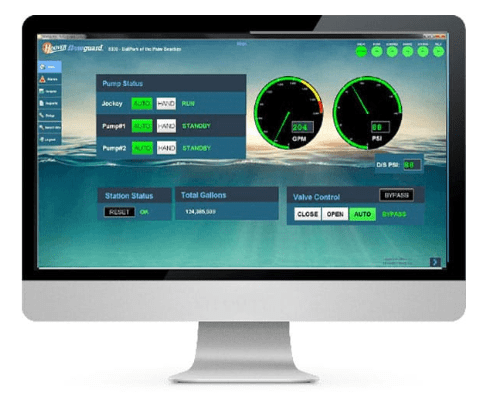
 Smart tech is the big story when it comes to water, and it's not really that new - but exactly what are smart irrigation systems? With such technology, irrigation is no longer a manual operation with a heavy reliance on staff being on-site. Wireless sensors communicate real-time information about external factors such as soil moisture levels and weather data to smart irrigation controllers. The controllers use this information to communicate with the water source to adjust the frequency and duration of watering cycles intelligently. This automation reduces the reliance on manual control and adjustment of irrigation with a subsequent improvement in water management. Smart irrigation is a combination of this technology with other advances - such as high-efficiency nozzles.
Smart tech is the big story when it comes to water, and it's not really that new - but exactly what are smart irrigation systems? With such technology, irrigation is no longer a manual operation with a heavy reliance on staff being on-site. Wireless sensors communicate real-time information about external factors such as soil moisture levels and weather data to smart irrigation controllers. The controllers use this information to communicate with the water source to adjust the frequency and duration of watering cycles intelligently. This automation reduces the reliance on manual control and adjustment of irrigation with a subsequent improvement in water management. Smart irrigation is a combination of this technology with other advances - such as high-efficiency nozzles.
Of course, the biggest benefits to be secured from smart irrigation are saving water (with precision watering), a healthier landscape and improved efficiency. It’s no longer an option – whether legally, economically or socially – to waste precious water. High tech is allowing businesses dependent on water use to reduce costs and at the same time conserve water. In doing so, smart irrigation systems offer significant benefits to landscape professionals in their day-to-day landscape management operations.
Remote access offers a really big plus to anyone responsible for looking after several properties. Now, with cloud-based software and irrigation apps, real-time control and visibility of the irrigation system in any location is possible from a mobile or fixed device - from managing pumps and measuring water levels to reporting and creating maintenance schedules. Along with day to day management and monitoring, it’s also possible to drill deep down into detailed information about each site or controller.
This is a feature that's even more advantageous when several maintenance teams are involved. Reports provide detail such as when and what repairs have been made and event sequences over time periods. Mobile apps allow teams wherever they are, whether in the field or traveling between sites, to receive alerts when faults or events such as leaks, power failures, low/high water usage and high flow rate or rapid cycling occur.
Water usage is monitored and managed via dashboards and reports. The software provides detailed information on actual/estimated water use at site, controller and pump station level. Real-time, actionable data means problems don’t get left for days before being discovered.
The best smart irrigation systems have easy to use software with an interface that’s user-friendly and responsive with clarity of design when it comes to features. Most companies will say their software is easy to use – in addition, the best companies offering smart irrigation solutions will provide full training and ongoing support. You can also ask about bilingual options if that's something your team would benefit from.
Targeted watering has so many benefits and that’s really why smart irrigation is a good thing. It’s a vital constituent of sound water management and helps to maintain a consistently healthy and beautiful landscape.

Water conservancy is a big issue around the world, not just here in Florida where we’re based. Yes, smarter water management techniques conserve water; they also save money and time – and that’s why anyone in the business of using water needs to put it top of their agenda.
We worked with this community to design and implement a proactive irrigation consolidation strategy. This resulted in the replacement of 24 problematic builder-installed pump systems with 10 Hoover Flowguard® pump systems. The community achieved both their key objectives of Variable Speed Control and Automated Pump System Controls, as well as reducing maintenance costs and ongoing irrigation repairs, energy use, sod replacement and fertilizer costs. Read our case study on this smart irrigation project.